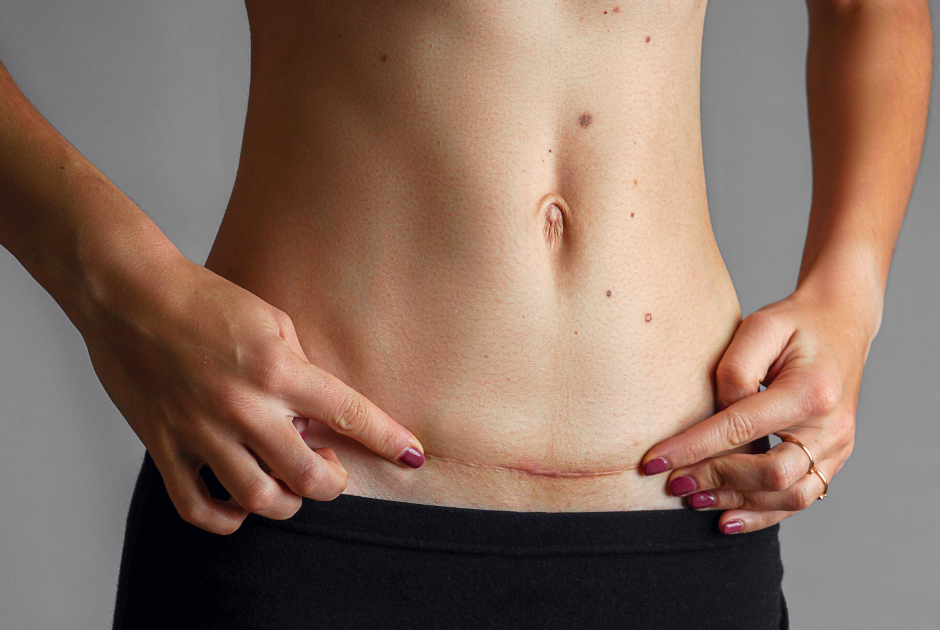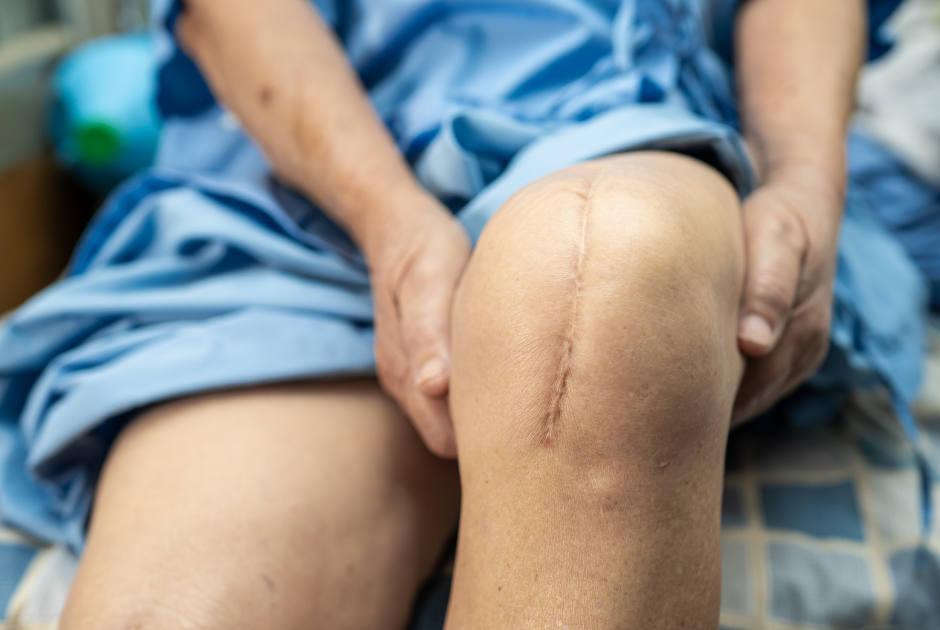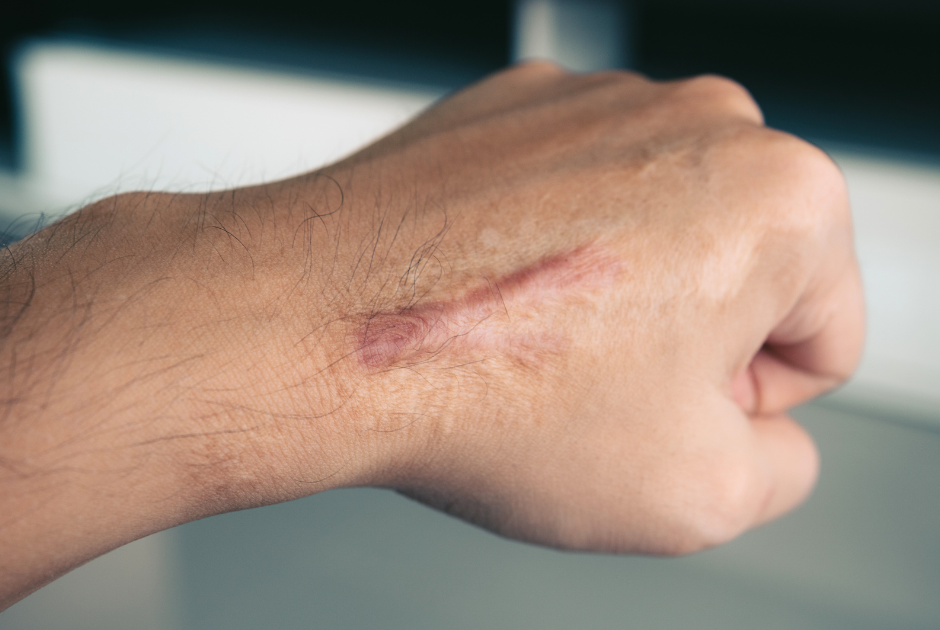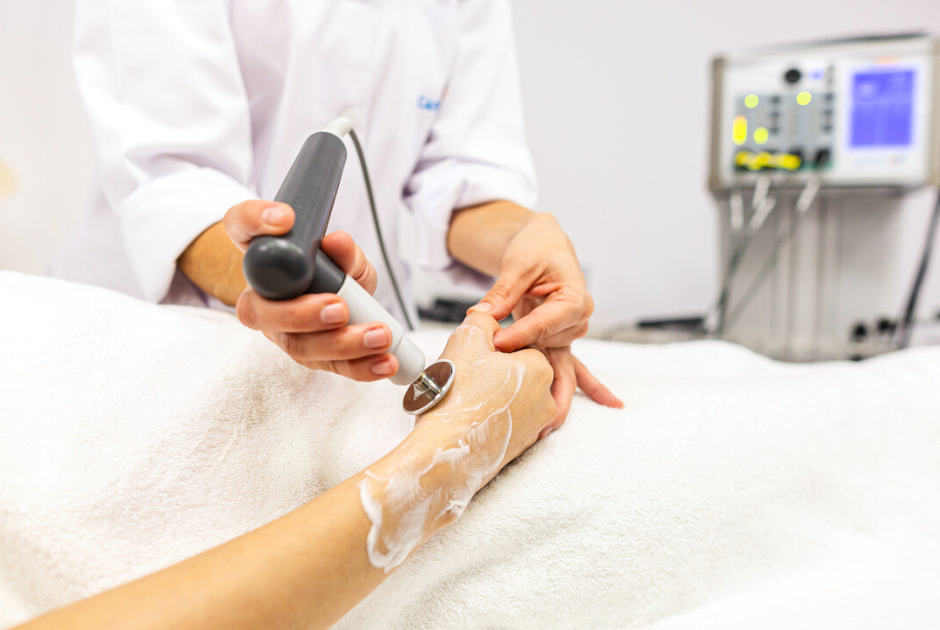
Scars are the visual evidence of the complex healing process and they can have a significant impact on the skin after surgical procedures, burn wounds and acneic episodes. They are a defense mechanism aimed at the repair of the damaged or lost tissues when our skin has suffered an aggression.
Even though it is difficult to make a scar disappear, there are techniques that can help us improve them. Furthermore, it is often forgotten that in certain scars, not only the most superficial layer of the skin, the visible one, is affected, but also far more profound tissues.
In this article, we will explore in detail the different types of scars, the different stages of the healing process and how Capenergy’s second generation radiofrequency can become an important tool for their treatment.
What types of scars exist?
Ideally, once the healing process has come to an end, the scar should align perfectly with the surrounding tissue, and look like a fine pale coloured line once the healing process has come to an end. The results, however, often don’t meet these expectations.

Based upon their appearance, the following types of scars can be distinguished:
- Flat scars: remaining at the same level as the surrounding skin.
- Atrophic scars: The area of the scar is located a bit lower than the skin surrounding the injury, due to insufficient collagen production. Sunken atrophic scars are often a consequence of acne.
- Hypertrophic scars: In this case, collagen production has been excessive. There is a thick tissue elevation that exceeds the surface of the skin surrounding the injury.
- Keloids: Considered the most problematic ones, these bulky scars spread farther than just the injury and are often accompanied by itchiness or intense burning while also being especially touch-sensitive. The aim of treating these scars is to improve vascularization to increase elasticity and break down possible adhesions.
The different phases of the healing process of wounds
When the skin suffers an injury, our body starts up a process of physiological replies, the scarring process, to repair and restore the injured tissues. In this scarring process, the following phases stand out:
Inflammatory phase
During the first 3 to 4 days, the inflammatory process is initiated. This phase presents signs such as reddening, localized oedema, pain and temperature increase of the injured area. The main objective of this phase is to eliminate bacteria and residues, thus preparing the wound bed for new tissue growth.
Proliferation phase
This phase, which can extend up to 14 days, is focused on the generation of new blood vessels in the damaged area. The objective is to regenerate the tissue and to close the wound.
Ripening and remodeling phase
During this phase, which can take up to 2 years, collagen is delivered to the wound. If the ripening or remodeling does not happen correctly, adhesions can be generated and fibrotic tissue can develop, inducing a loss of water, elasticity and flexibility. In those cases, the scars can present pain, changes in coloring as well as issues related to elasticity and sensitivity.
If these phases develop successfully, the final scars have the look of a clear, white and flexible line that does not protrude from the surrounding skin.

Nevertheless, several factors can influence the degree of healing, such as the size and depth of the injury, its location and the underlying cause of the injury. Each of these elements can affect the efficiency of the healing process.
How to treat scars efficiently?
Initiating the treatment of scars in an early stage is essential to assure an adequate organization of the collagen fibers, avoiding complications later on.
The treatment of scars focuses both on improving their aspect as well as improving mobility. The success of these interventions depends heavily on the type and specific nature of the scars.
In physiotherapy, different techniques are used for the treatment of scars, including deep transverse Cyriax massage, fascial liberation techniques, laser, EPI and radiofrequency.
Treatment of scars with Capenergy: a significant advance
Capenergy’s radiofrequency technology offers an integral approach for the treatment of scars, both in early stages to improve the healing process and prevent the appearance of hypertrophic scars or keloids, as in later stages to improve the quality of the tissue.

In cases where the goal is to stimulate the healing process, radiofrequency is applied in isothermal mode, avoiding an excessive increase of the tissue and boosting the natural healing processes.
On the other hand, for the treatment of older scars, the active plates of Capenergy’s 2nd generation radiofrequency devices are an important tool. They create a controlled increase of the temperature inside the tissue, improving local circulation and boosting the regenerative capacity by supplying nutrients and oxygen.
One of the biggest advantages of these plates is that they are equipped with a temperature sensor. This way, we can control what we’re doing: often, if the scar is very sensitive, working in hyperthermia is not beneficial.
After the application of the automatic plates, the treatment can continue with the manual application of the capacitive and resistive electrodes, treating the scar both on a superficial and profound level.
Starting from C200, it is possible to apply 2 electrodes at the same time: this allows us to introduce double power and reduce the treatment times by half.
The incorporation of the Capenergy radiofrequency in the treatment of scars, offers a versatile and efficient strategy, which allows health professionals to adapt to their patients’ diverse conditions and specific needs.
Would you like to know more about Capenergy’s radiofrequency and how it can help you treat different ailments at your clinic? Request a free demo.